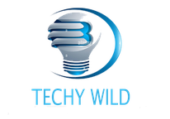Operational skill used to confer long-term advantage. If you had leaner manufacturing, made higher-quality products, or had superior distribution, you could outrun competitors. But today those capabilities are table stakes. The new source of competitive advantage is customer centricity: deeply understanding your customers’ needs and fulfilling them better than anyone else.
You need data to accomplish this. Yet having troves of data is of little value in and of itself. What increasingly separates the winners from the losers is the ability to transform data into insights about consumers’ motivations and to turn those insights into strategy. This alchemy requires innovative organizational capabilities that, collectively, we call the “insights engine.”
The vital role of the insights engine was revealed in a global market-research study led last year by the strategy consultancy Kantar Vermeer. The study, called Insights2020 (i2020), involved interviews and surveys of more than 10,000 business practitioners worldwide. Of the factors that were found to drive customer-centric growth, none mattered more than a firm’s insights engine, embodied in its insights and analytics function. (While these go by many names—including “I&A,” “consumer and market insights,” and “customer intelligence”—for simplicity we refer to them as insights functions here.)
In this article we describe the elements of the insights engine and show how it works at consumer goods giant Unilever. The firm’s 400-plus brands, which include Dove, Knorr, and Axe, generated $60 billion in revenue in 2015, propelling underlying sales growth of 4.1% for the year. Performance at that level requires the full engagement of the company’s 169,000 employees, who span functions from supply chain and R&D to marketing and finance. But as we’ll show, it’s the insights engine, manifested in the firm’s Consumer and Market Insights (CMI) group, that underpins Unilever’s customer-centric strategy.
A New Strategy
When Unilever released its first-quarter results in April 2016, CFO Graeme Pitkethly, addressing analysts, announced a major new initiative to shift resources to local markets around the world. He noted that consumers are increasingly seeking brands and products that align with their cultural identity and lifestyle. The result is that local firms, particularly in emerging markets, are growing fast and strengthening their competitive positions. The new program, he explained, would clarify accountability and make Unilever’s marketing teams more agile both globally and locally.
Country business heads had recognized the rising popularity of local brands, and the implications were being discussed separately at many levels across the firm. A presentation to the operating board by CMI’s head, coauthor Stan Sthanunathan, drew on this intelligence and on CMI’s own review of what was happening. Sthanunathan walked the board members through an analysis of why local brands were growing, what threat this posed, and how Unilever could compete. The presentation focused attention, catalyzed the conversation about strategy, and ultimately led to changes in both organization and mindset.
Unilever’s new initiative showcases the type of high-level advisory role that leading insights functions are increasingly taking. A decade ago, this sort of strategic involvement by a customer intelligence operation was almost unheard of. The market research department typically was a reactive service unit reporting to the marketing function, fielding marketing requests, and producing performance management reports. Over time, however, market research departments have been shifting from merely supplying data to interpreting it—distilling insights about consumers’ motivations and needs on the basis of their behavior.
Driven by the imperative to become customer-centric, leading firms are now completing the transformation of market research groups into true insights engines with a fundamentally strategic role. At Unilever, CMI’s prominently communicated mission is “to inspire and provoke to enable transformational action.” Note that the word “insight” is missing—intentionally. That’s because insights merely provide a means to the desired end: action that drives business growth.
In the text that follows, we describe 10 characteristics of superior insights engines, gleaned from the i2020 research and our experience at Unilever. We divide these into two broad groups: operational characteristics, such as functional independence and experimental orientation, and people characteristics, such as business acumen and well-balanced analytic and creative thinking styles.
Operational Characteristics
Seven of the key characteristics relate to the way insights engines operate.
Data synthesis
Until recently, large firms had an advantage over smaller rivals simply because of the scale of their market research capability. Today research that once took months and cost millions can be done for a fraction of that price and in mere days. What matters now is not so much the quantity of data a firm can amass but its ability to connect the dots and extract value from the information. This capability differentiates successful organizations from less successful ones: According to the i2020 research, 67% of the executives at overperforming firms (those that outpaced competitors in revenue growth) said that their company was skilled at linking disparate data sources, whereas only 34% of the executives at underperformers made the same claim.
This proficiency in using data is evident in high-performing firms across industries, including pharmaceuticals, financial services, hospitality, and consumer packaged goods. And to improve, many firms are creating dedicated data groups, under senior executive leadership, to consolidate, manage, and analyze data and distribute it throughout the organization. At Unilever, CMI has taken on this role.
For any insights group that serves as a data aggregator, interpreter, and disseminator, the first challenge is to integrate massive and disparate sets of both structured and unstructured data from such sources as product sales figures, spending on media, call-center records, and social media monitoring. This may amount to tens of millions of pieces of data. The data sets are customarily owned by different teams—sales data by sales, media spending by marketing, customer interactions by customer service, and so on.
Working closely with IT, CMI implemented a global marketing-information system, accessible to all marketers throughout the company, that integrates data and presents it in consistent formats. This ensures that all users, wherever they reside in the firm, see the same information in the same way—what CMI calls “one version of the truth.” Thus if marketing and finance are both looking at first-quarter shares of Dove soaps in any market segment, they’re viewing the same numbers and units, derived using the same methodology and displayed in the same manner. Likewise, they see precisely the same picture when they look at data across brands, retailers, or regions.
Unilever’s global marketing-information system has dramatically reduced the debates about data definitions, methodology, and interpretation that led to competing (and sometimes wrong) conclusions. It has also freed CMI from much of the resource-intensive reporting work that mires many firms’ insights groups, allowing it to shift its focus from simply providing data to delivering insights and recommendations for action.
Consider CMI’s role in Unilever’s campaign to improve consumers’ heart health. The firm was selling cholesterol-lowering spreads and drinks, but the hurdle was getting consumers to consistently use them. CMI’s research generated quantities of data about consumption patterns. The initial insight was that for behavioral change to stick, people had to use the products for at least three weeks. The further insight was that the best way to get that long-term commitment was through peer pressure—engaging a group to work together. That insight then powered the marketing team to create a program called It Takes a Village, which challenges the people of an entire town to lower their cholesterol. The program, now in communities in more than 10 countries, includes cholesterol testing, nutrition advice, cooking guidance (involving the firm’s products), and group breakfasts and exercise. To date, 85% of people taking the challenge have lowered their cholesterol.











